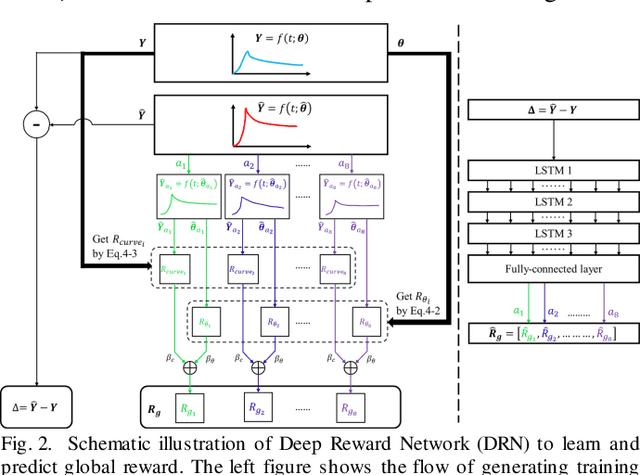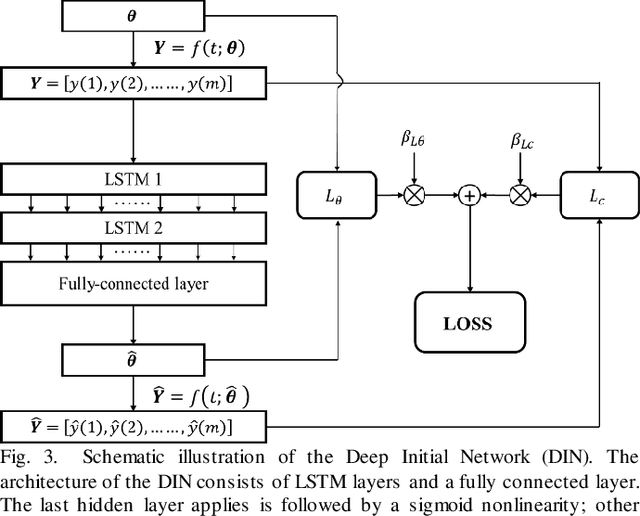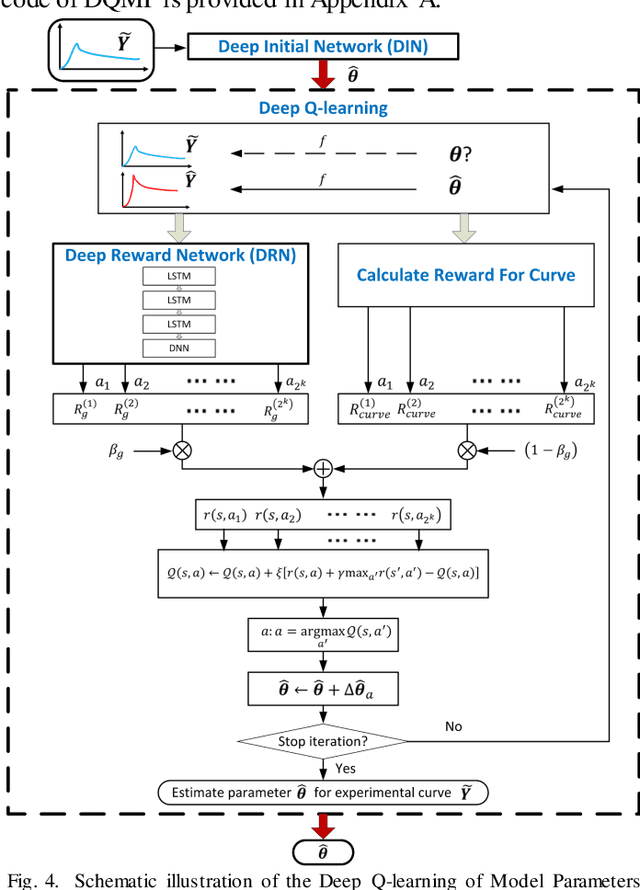Mostafa Fatemi
Mayo Clinic Department of Physiology and Biomedical Engineering, Mayo Clinic
Deep Q-learning of global optimizer of multiply model parameters for viscoelastic imaging
Apr 01, 2022



Abstract:Objective: Estimation of the global optima of multiple model parameters is valuable in imaging to form a reliable diagnostic image. Given non convexity of the objective function, it is challenging to avoid from different local minima. Methods: We first formulate the global searching of multiply parameters to be a k-D move in the parametric space, and convert parameters updating to be state-action decision-making problem. We proposed a novel Deep Q-learning of Model Parameters (DQMP) method for global optimization of model parameters by updating the parameter configurations through actions that maximize a Q-value, which employs a Deep Reward Network designed to learn global reward values from both visible curve fitting errors and hidden parameter errors. Results: The DQMP method was evaluated by viscoelastic imaging on soft matter by Kelvin-Voigt fractional derivative (KVFD) modeling. In comparison to other methods, imaging of parameters by DQMP yielded the smallest errors (< 2%) to the ground truth images. DQMP was applied to viscoelastic imaging on biological tissues, which indicated a great potential of imaging on physical parameters in diagnostic applications. Conclusions: DQMP method is able to achieve global optima, yielding accurate model parameter estimates in viscoelastic imaging. Assessment of DQMP by simulation imaging and ultrasound breast imaging demonstrated the consistency, reliability of the imaged parameters, and powerful global searching ability of DQMP. Significance: DQMP method is promising for imaging of multiple parameters, and can be generalized to global optimization for many other complex nonconvex functions and imaging of physical parameters.
Deconvolution of vibroacoustic images using a simulation model based on a three dimensional point spread function
Jul 13, 2012



Abstract:Vibro-acoustography (VA) is a medical imaging method based on the difference-frequency generation produced by the mixture of two focused ultrasound beams. VA has been applied to different problems in medical imaging such as imaging bones, microcalcifications in the breast, mass lesions, and calcified arteries. The obtained images may have a resolution of 0.7--0.8 mm. Current VA systems based on confocal or linear array transducers generate C-scan images at the beam focal plane. Images on the axial plane are also possible, however the system resolution along depth worsens when compared to the lateral one. Typical axial resolution is about 1.0 cm. Furthermore, the elevation resolution of linear array systems is larger than that in lateral direction. This asymmetry degrades C-scan images obtained using linear arrays. The purpose of this article is to study VA image restoration based on a 3D point spread function (PSF) using classical deconvolution algorithms: Wiener, constrained least-squares (CLSs), and geometric mean filters. To assess the filters' performance, we use an image quality index that accounts for correlation loss, luminance and contrast distortion. Results for simulated VA images show that the quality index achieved with the Wiener filter is 0.9 (1 indicates perfect restoration). This filter yielded the best result in comparison with the other ones. Moreover, the deconvolution algorithms were applied to an experimental VA image of a phantom composed of three stretched 0.5 mm wires. Experiments were performed using transducer driven at two frequencies, 3075 kHz and 3125 kHz, which resulted in the difference-frequency of 50 kHz. Restorations with the theoretical line spread function (LSF) did not recover sufficient information to identify the wires in the images. However, using an estimated LSF the obtained results displayed enough information to spot the wires in the images.
 Add to Chrome
Add to Chrome Add to Firefox
Add to Firefox Add to Edge
Add to Edge